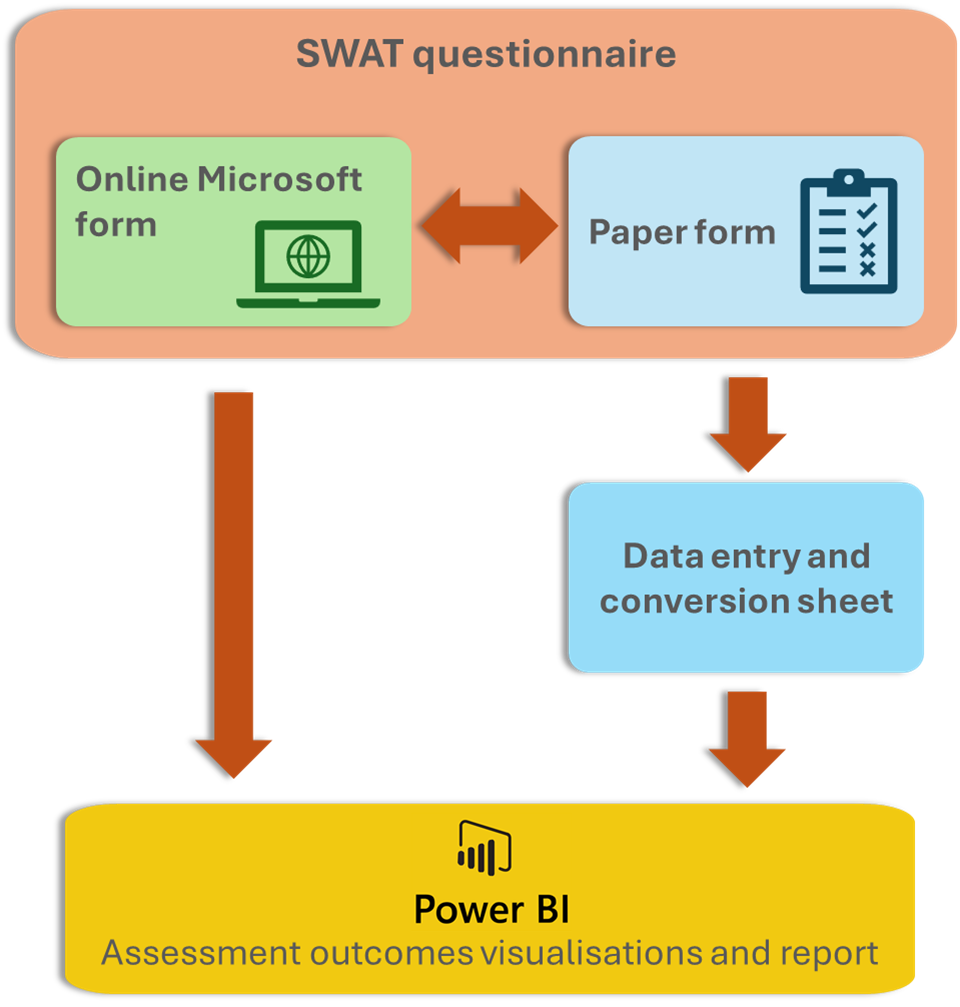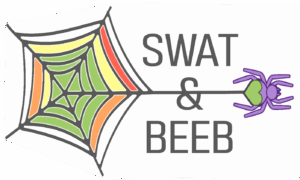Standardised
Welfare
Assessment
Tool
Table of Contents
In a collaboration between researchers at the University of Stirling and the Royal Zoological Society of Scotland, we have created and developed a validated welfare assessment tool. This tool has 50 questions, and its aims are:
- To identify current welfare problems and the factors responsible
- To identify factors which contribute to positive welfare states
- To identify if information pertinent to assessing welfare is absent or difficult to access
- To provide a structured framework to quantify changes in welfare over time
Completion of the tool provides a very useful snapshot at one point in time, and over time. By completion over different seasons, a fuller picture of welfare 24/7 across the lifespan can be made. However, many questions could be better evidenced with detailed quantitative evidence of behaviour and how animals interact with their environment. This is where the SWAT is complemented by the BEEB, with specific questions best addressed with the BEEB.
The SWAT elements
The SWAT’s main element is the questionnaire. The remaining elements can be used to provide details about the questions and for data handling and analysis.

The Standardised Welfare Assessment Tool questionnaire is a 50 question welfare assessment. The questions address the Five Domains and both resource inputs and animal outputs. This welfare assessment has been put together using the BIAZA Animal Welfare Toolkit as a basis, then validated through research, and further developed for general use as a collaborative effort between RZSS Edinburgh Zoo and University of Stirling.
The SWAT is designed to:
- Be applicable to all animals
- Account for the perspectives of all assessors
- Be a consistent record of welfare assessment and status
The Power BI template is made to assist in analysing and interpreting the outcomes of the SWAT. This template uses your assessment responses to autogenerate visuals and tables of your assessors’ responses.
This Power BI template:
- Organises outcomes to highlight areas to be targeted by action plans
- Distinguishes data for resource inputs, animal outputs, and the Five Domains
- Can be used to generate visual reports for welfare discussions or records
- Automatically organises data into exportable table

Downloading and using the SWAT
The SWAT zip folder contains the assessment along with other documents for guidance and analysis. The folder contains:
- SWAT questionnaire: 50 question questionnaire paper form
- SWAT guidance: Guidance and suggestions on how to go through the welfare assessment process including assessors to use, question delegation, timelines, and a link to the online form.
- SWAT question explainer: An excel sheet which provides details about the questions
- SWAT paper form data entry: If completing the SWAT on paper, this excel sheet can be used to enter the data and convert it to be entered directly into the Power BI template.
- SWAT visualisations_Power BI template: A Power BI template for organisation and visualisation of the assessment outcomes. To use the Power BI template, you only need the ‘SWAT paper form data entry’ excel sheet or the unedited Microsoft forms export if completed online.
Download updates as of 21st July 2025:
- SWAT Guidance v1.1: Updated link to SWAT online MS form which now allows duplication
SWAT questions that can be addressed using the BEEB
All questions in Behaviour category
| Question # in SWAT | Behaviour questions |
|---|---|
| 37 | Animal can be seen approaching and moving away from conspecifics freely |
| 38 | Performs appropriate levels of self-care behaviours (grooming, preening, drinking, resting, comfort activities) |
| 39 | Has mostly positive interactions with conspecifics or other animals |
| 40 | Has mostly positive or neutral interactions with staff/visitors |
| 41 | Responds appropriately to novel changes in the environment (interest in appropriate enrichment vs fear/aversion/apathy) |
| 42 | Can express choice and control over being in different (indoor/outdoor) areas (except for maintenance periods) |
| 43 | Exhibit appropriate territorial behaviour (patrolling, scent marking) |
| 44 | Exhibits appropriate foraging and feeding behaviours |
| 45 | Exhibits play behaviour (alone or socially) |
| 46 | Exhibit appropriate levels of rest and sleep |
| 47 | No evidence of dysfunctional social interactions |
| 48 | No evidence of abnormal or stereotypic behaviour |
| 49 | Exhibits reproductive behaviours as appropriate to the species and individual (courtship, mating, nest-building, incubating, birth, rearing etc.) |
| 50 | Exhibits species specific behavioural needs (rooting, burrowing, climbing, perching, social grooming etc.) |
6 questions in Environment category
| Question # in SWAT | Environmental interaction questions |
|---|---|
| 20 | The size, shape and topography of the enclosure is appropriate for the species to exercise, explore and exhibit normal territorial behaviours |
| 21 | Substrates are suitable for the species (consider locomotion (abrasion, traction, support); resting (comfort, depth, cleanliness); foraging (depth, cleanliness); burrowing (will support tunnels, depth, secure)) |
| 23 | Has appropriate shelters, retreats, visual barriers, off show areas from conspecifics and visitors |
| 24 | Has appropriate shade and shelter from weather/climate |
| 25 | Planting is appropriate for the species, providing shelter, shade, retreats, microclimate provision, feeding opportunities, and plants are not toxic and do not present an escape risk |
| 26 | Furnishings allow appropriate species-specific behavioural needs (climbing, swinging, jumping, perching, nesting, stretching, hiding, sleeping, flight, etc.) |
